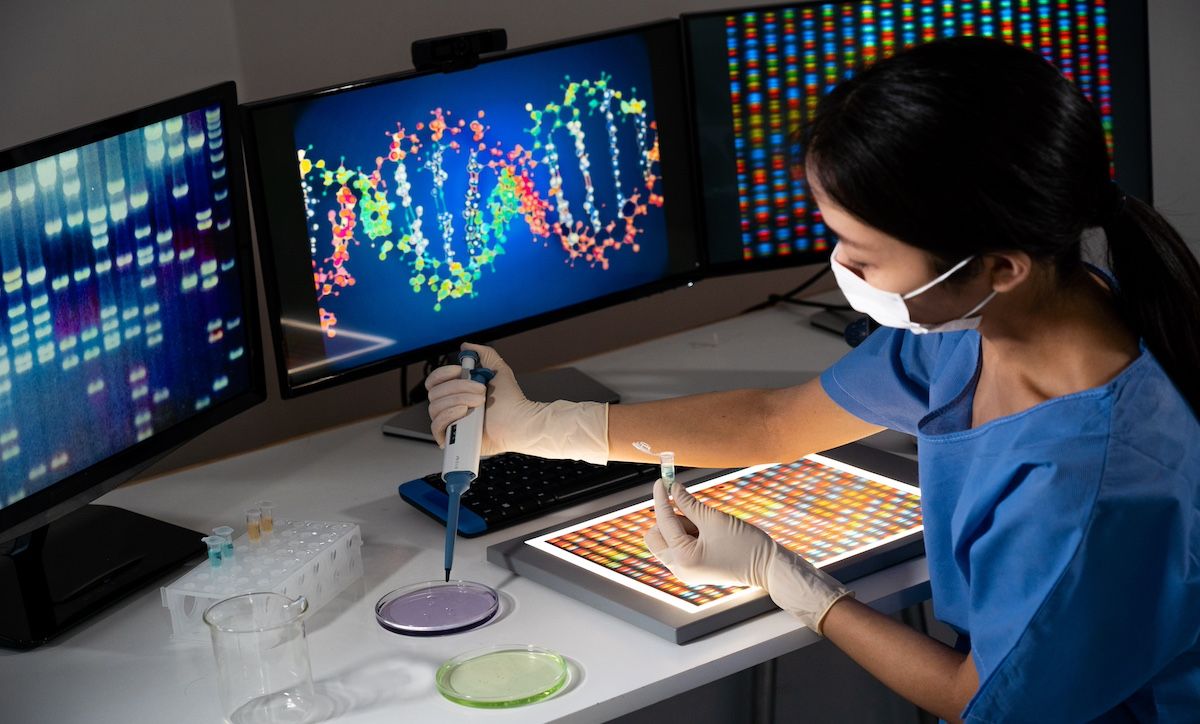News
Article
Proof-of-Concept Study Highlights Potential of Gene-Based Therapy for Timothy Disease
Author(s):
The proof-of-concept study showed that antisense oligonucleotides developed by the researchers successfully restored cellular development and brain cell function in patients with the disease characterized by multiorgan dysfunction.
Gene-based therapy may be an answer to long-sought treatment for the rare disease Timothy syndrome (TS), suggest new study findings published in Nature.1
The proof-of-concept study showed that antisense oligonucleotides (ASOs) developed by the researchers successfully restored cellular development and brain cell function in patients with the disease characterized by multiorgan dysfunction, including severe forms of arrhythmias, webbed or fusion of the skin between fingers and toes, and autism.2
Both in vitro and in vivo after transplantation, the ASO was able to reduce exon 8A. | Image Credit: © RFBSIP - stock.adobe.com

“Not only do these findings offer a potential road map to treat Timothy syndrome, but research into this condition also offers broader insights into other rare genetic conditions and mental disorders," said Joshua A. Gordon, MD, PhD, director of the National Institute of Mental Health, in a statement.3
The researchers, said study author Sergiu Pasca, MD, and colleagues at Stanford University, Stanford, California, in the statement, are now working toward translating their findings into the clinical setting.
Hoping to turn the tide on a historically challenging treatment landscape for the disease state, the researchers have presented their potential treatment approach, which they say may form the foundation for new therapeutic strategies for TS and beyond.1 The successful development of new and promising treatment for neuropsychiatric diseases like TS has remained elusive due to the inability to access human brain tissue. Current approaches include L-type calcium channel blockers, which fail to restore various cellular phenotypes of the disease, and roscovitine, which carries off-target effects.
Both in vitro and in vivo after transplantation, the ASO was able to reduce exon 8A, which was consistently elevated in the splicing profiles of the tested human neurons. A genetic mutation of the 8A region of CACNA1C—a gene that controls calcium channels—is responsible for causing TS. Notably, the treatment approach was able to reduce these levels while increasing reliance on exon 8, a region of the same gene that is not impacted by the disease, thus restoring normal function of calcium channels.
The treatment demonstrated this effect, in a dose- and time-dependent manner, in organoids derived from human neurons from 3 patients with TS, with exon 8A suppression lasting up to 90 days. The group found consistent results when they transplanted organoids into the brains of rates.
“There are a number of limitations to our study. First, our current ASOs do not distinguish WT exon 8A and TS exon 8A. Further refinement, including testing ASOs of varying length, chemical modifications and targeting upstream and downstream of the TS variant, may be needed to increase specificity,” explained the researchers. “Longer and earlier exposure to ASOs may also be needed to fully restore migration defects. The p.G406R mutation in TS1 modelled here is in exon 8A of CACNA1C. It would be clinically relevant to investigate whether TS2, caused by the same amino acid mutation but in exon 8, also shows abnormal splicing of exon 8/8A and whether ASOs can correct splicing defects and rescue channel function. Because patients with TS have cardiac arrythmias, it would be useful to test the ability of these ASOs to rescue defects in cardiac organoids.”
The group added that ASO toxicity was assessed in vitro, although recent studies have suggested a need for in vivo short-term and long-term pharmacology to determine relative toxicity of the approach. Some research has pointed to dose-dependent acute neurotoxicity in the central nervous system associated with ASOs that contain a gapmer design.
References
1. Chen X, Birey F, Li MY, et al. Antisense oligonucleotide therapeutic approach for Timothy syndrome. Nature. Published online April 24, 2024. doi: 10.1038/s41586-024-07310-6
2. Timothy syndrome. MedlinePlus. Accessed May 28, 2024. https://medlineplus.gov/genetics/condition/timothy-syndrome/
3. Gene-based therapy restores cellular development and function in brain cells from people with Timothy syndrome. National Institutes of Health. April 24, 2024. Accessed May 28, 2024. https://www.nih.gov/news-events/news-releases/gene-based-therapy-restores-cellular-development-function-brain-cells-people-timothy-syndrome




